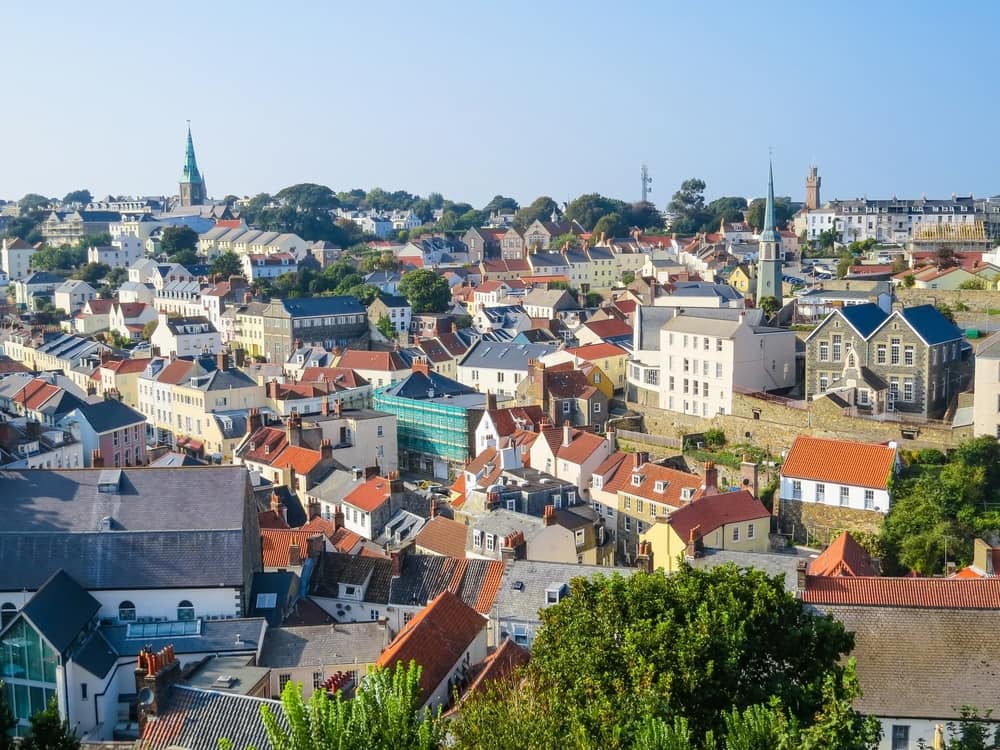Guernsey has halved the amount of residual waste it collects after making major changes to its recycling services.
Announcing the recycling success, the island’s government, the States of Guernsey, indicated that the ‘pay as you throw’ charge for residual waste was not the defining factor behind the rise, pointing to the introduction of food waste recycling as also helping to lift the figures.
In the first six months of 2019 around 2,125 tonnes of ‘black bag’ residual waste were collected on the Channel Island– this is compared to 5,100 tonnes for the same period in 2018.
The council claims this puts it on track for “one of the highest recycling rates in Europe”. Speaking to letsrecycle.com in August, Jim Anderson – projects liaison officer at States of Guernsey – said the island authority was confident recycling rates would rise above 60%. Austria has a recycling rate of 63%, whilst Germany’s sits at 62%. (see letsrecycle.com story)
In the past year Guernsey has brought in kerbside glass recycling, introduced food waste collections and begun a ‘pay as you throw (PAYT) system.
Behaviour
Sarah Robinson, Guernsey Waste operations manager, explained that monitoring before and after the service changes showed households were now setting out more recycling for collection.
“What we saw was a very large shift in behaviour, with lots more using the recycling collections,” she said.
“We saw another increase after the new pay as you throw charge came in, albeit not as marked. However by then we were already seeing very high participation across the board.”
What we saw was a very large shift in behaviour, with lots more (households) using the recycling collections
Ms Robinson added: “What it demonstrates is islanders are keen to recycle, and if we provide the right services, and the right incentives, they will use them.”
Food waste collections accounted for the majority of waste diverted from residual bins, with more than 1,700 tonnes of food waste collected in specialised collections in the first six months of the year. This waste is sent to generate electricity and create compost.
Kerbside recycling increased by 500 tonnes, whilst the amount of glass recycled has gone up by 15% since kerbside collections of the material began.
Guernsey also suggest that the PAYT system has had a positive impact upon recycling rates. The system means residents must buy stickers which have to be put on every bag of non-recyclable waste they want to have collected.

Tina Norman-Ross, recycling officer at the States of Guernsey, won the Local Authority Champion Award at this year’s Awards for Excellence in Recycling and Waste Management. Here is she is pictured ahead of the launch of the PAYT scheme explaining it to a member of the public.
Survey
A June survey of over 1,000 residents in the Castel and St Peter Port area of Guernsey found that more than 90% use the island’s new kerbside recycling service.
This is up from 74% of households who said they used the old blue and clear bag kerbside recycling service.
This year’s survey also found that 93% of households were separating their food waste for collection.
Participation in glass recycling still appears to be lower, with 59% of households setting out their glass collection bag at least once during the four weeks of the survey. However the council say this is likely to “underestimate participation” as most residents use relatively little glass and so may not need to place the bag out for collection at every opportunity.
Studies have also shown that the amount of recyclable waste being put in residual bins has reduced to 8%, down from 15% in both 2018 and 2015.
The post Guernsey halves residual waste with recycling changes appeared first on letsrecycle.com.
Source: letsrecycle.com Waste Managment



